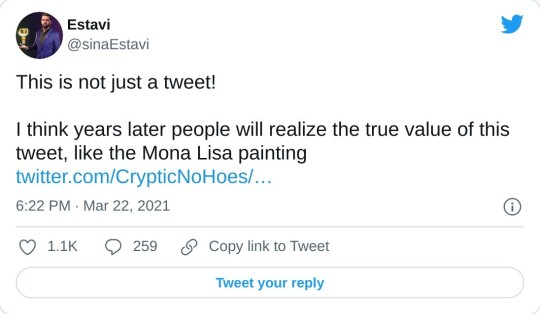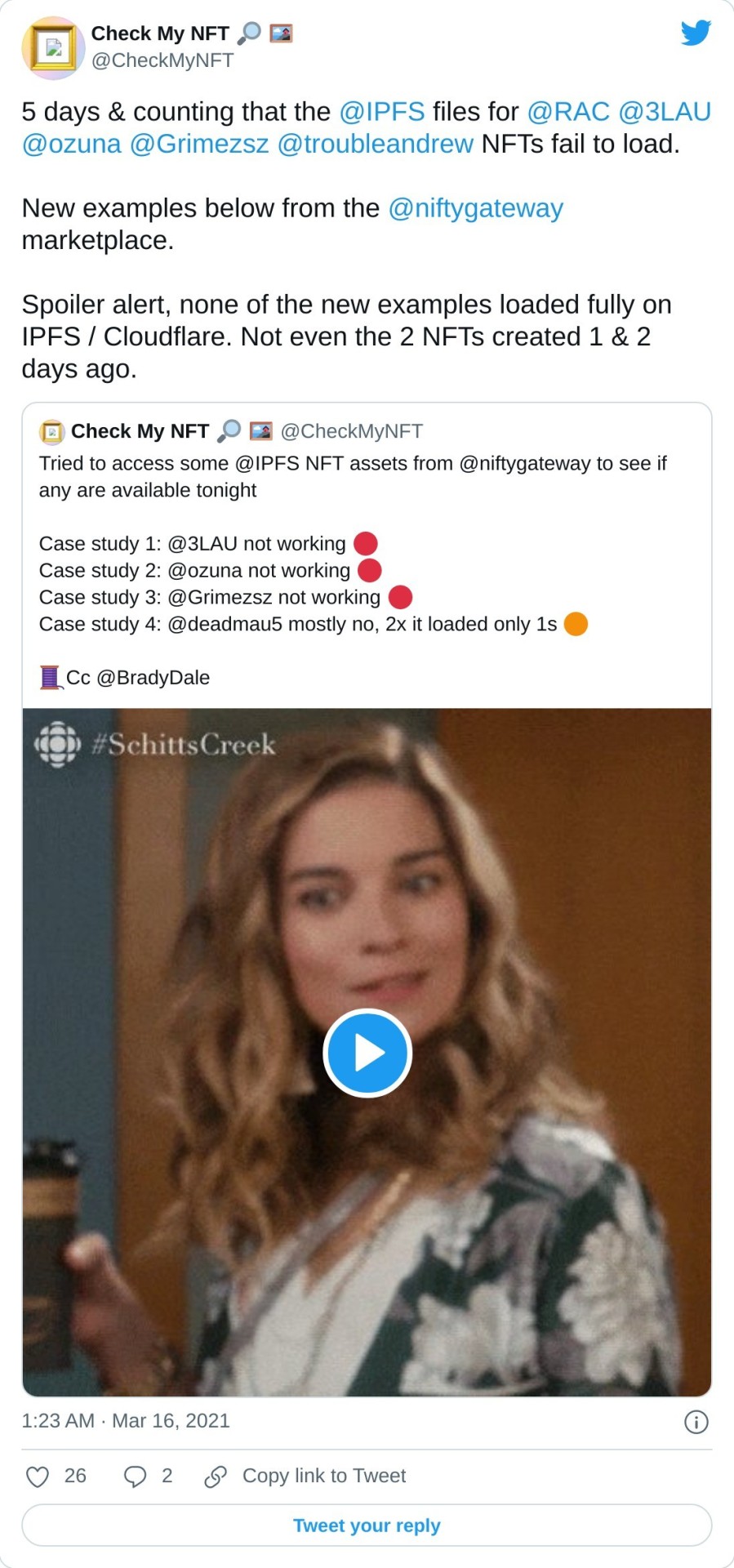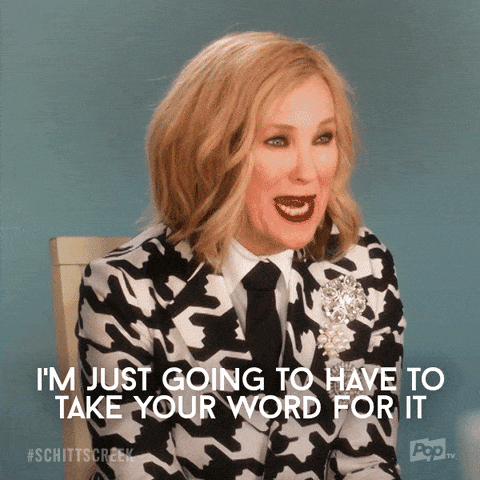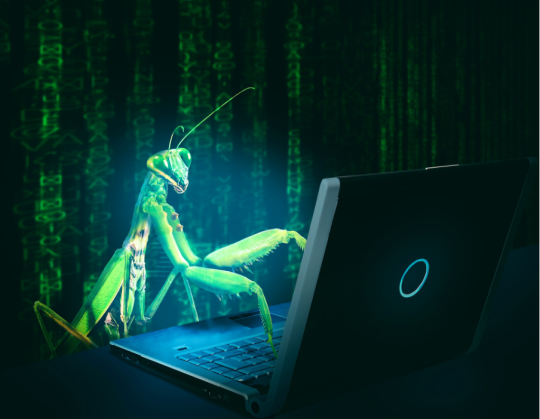Text
Cash and crypto - Do you prefer not to regulate?

Cryptocurrencies give access to 2 billion unbanked individuals who have been unable to open a bank account the meet their daily financial needs. In Venezuela, hyperinflation and US sanctions are boosting cryptocurrencies to provide people with the banking system they need. The heart of cryptos lies in their unregulated and decentralized nature. The question is when moving away from failing financial infrastructures and weak local currencies, will they work?
When comparing cryptocurrencies and traditional banking services, some basic principles sometimes seem to be forgotten. For example, when you put money on your current or savings account, you probably think you are giving it to the bank for safekeeping. And, in many respects, this is correct, but in reality, what has happened is that you have just lent your money to the bank (following certain terms and conditions). In this transaction, the bank will use the money it has lent to create more money. As a result, you have become a lender to the bank, a facilitator of money creation, and have relevant rights secured by law.
The traditional banking system is among the most regulated industries in the world. Those who still remember the 2008 financial crisis might agree that regulation has an important role in keeping our global economy safe. A heavy regulation aims to safeguard the rights of those lenders, in addition to the stability and safety of the financial system. This means capital adequacy requirements, mandatory deposit schemes and last resort lender intervention frameworks, to name a few.
At the moment, cryptocurrencies provide transfer of money globally faster than any bank can do. When considering the aspect of cryptocurrencies replacing traditional banking services, it should be kept in mind that cryptos are highly volatile, and, currently, unregulated. In jurisdictions with effective traditional banking industry, they are mainly used for speculative purposes.
There are up to 12.000 different cryptocurrencies valued around at $3 trillion. Sounds like a lot of money not to be regulated. It is no wonder that such numbers have risen concerns regarding its impact on the financial stability that is so interconnected globally. Eventhough, Sir Jon Cunliffe from the Bank of England says that financial stability risks at the moment are relatively low, it seems that arguments against regulating are weakening. Scott Duke Kominers thinks the real question is not if the field should or should not be regulated but how heavy the regulatory burden should be.
"I don’t think it’s a question of ‘no regulation’ versus ‘a lot.’ The real question is the extent to which regulators understand that crypto is a different type of product and tech infrastructure from anything they’ve regulated before." - Scott Duke Kominers (Harward Gazette, 29 September 2021, interviewed by Christina Pazzanese)
'If you cannot fight them join them', is the mentality taken by those who have accepted that cryptocurrencies are here to stay. "55% of the worlds top 100 banks are already investing in the crypto and blockchain space", announces Carla Mozée (Market Insider, 15 August 2021). The more money is involved, the more interest there is to regulate, and thus, protect the rights of those putting their money into circulation (and not into grandmother's knitted sock) to benefit the society as a whole.

Read more:
"Future of Money’ economist says the end of cash is coming—here’s what could replace it" by Taylor Locke (CNBC make it, 29 November 2021)
"How Cryptocurrencies Affect the Global Market" by Justin Kuepper (the balance, 29 October 2021)
0 notes
Text
Will Bitcoin be a safe haven when the next crisis hits? Some surely thinks so.
Reblogging: "Bitcoin is the real safe haven, says Bobby Lee" by Cointelegraph, 28 January 2021.
"Buy low, sell high" - the golden rule of investing. Investors are always looking for the next big thing and a safe place to put the profits when the next crisis hits. Some believe Bitcoin could be both highly profitable and secure when all goes south. Taken the volatility of cryptocurrencies, this argument seems illogical, but let's see.
On Black Friday, 26 November 2021, Bitcoin dropped 20% below the all-time high in November. The decline was due to investors moving their money away from riskier assets after the announcement that a new coronavirus variant, omicron, has been found. In the light of these events, it seems like investors are not, at least yet, considering Bitcoin to be a safe haven in such crisis.

Furthermore, Vildana Hajric (The Economic Times, 30 November 2021) points out how strategists say that Bitcoin has
“a tendency to closely track moves of the broader stock market”.
If the strategists are right and Bitcoin follows the movements of the stock market, this puts the safe haven argument under a considerable pressure. "The 100-day correlation coefficient of Bitcoin and the S&P 500 stands at 0.33, among the highest readings of the year", there is no safe haven argues Bloomberg news.
When the next big crisis hits, what will it be for you - Bitcoin or perhaps good old gold? The debate is on. Read more (Bloomberg Intelligence, 25 October 2021) "Gold or Bitcoin? Store-of-value debate rages as Bitcoin grows".
**My favoured investment tip out of them all, diversification.

0 notes
Text
Will NFTs create a new profit stream for translators?
Translators are highly educated people who love the world of language. Sadly, in many countries, they end up earning low salaries even though their contribution to the success of the literacy work, as the communicators of two different wolds of language, is paramount. The music industry is already exploiting the rise of new IPRs, such as NFTs. Could the literacy works do the same? Yes, definitely! The potential will be seen when the first NFT auction of a literacy work will become a reality - and this might be on 28 May 2022 when the world's first Japanese novel NFT auction will close.
The Japanese novel "Pure" by the author Miyuki Ono is auctioned as NFT on the OpenSea NFT Market Place. The market place is also selling NFTs of two English translations accumulating income not only to the original author of the novel but also to the translators as well. Exciting!
Read more from "Japanese sci-fi novel’s English translations exclusively NFTs" Forkast blog by Danny Park.
0 notes
Text
NFT – a fascinating story or a lucrative investment? What do I own and how might I lose it?
A digital artwork ‘Everyday’ was sold for over $69 million early this year at Christie’s in New York. In the blog “NFTs and the Law: What Do I Actually Own?” Julian Pipolo explains what was truly sold and what rights of ownership were transferred from the seller, Beeple, to the buyer, pseudonym known as “MetaKovan”, in this transaction.

Image “Everydays: The First 5000 Days” by Beeple from the blog “Beeple sold an NFT for $69 million” by Jacob Kastrenakes.
The digital revolution has opened a marketplace for stories. With the rise of these marketplaces, the value of digital artefacts is exploding. The trading volume for OpenSea, the biggest marketplace for NFTs, was $3 billion in August 2021.
What makes NFTs worth so much? Similarly, to diamonds, for example, the value arises from NFTs’ being scares and authentic. This is guaranteed by storing the data on the blockchain. Sounds good right? How would you feel about having the first tweet sold by Jack Dorsey for $2,9 million in your investment portfolio?

A tweet? Sounds a bit crazy, doesn’t it? Is there a new class of intellectual property being created?
Security or not?
As Julian Pipolo points out, some argue NFTs are securities. NFTs that offer revenue distributions to their current holders could be considered securities. What about a digital art comparable to a painting on your wall? Perhaps not, but it is safe to say that as regulation is not clear, every NFT should be analysed. For example, on one hand, the original NFT issuer might receive a share of proceeds when the NFT is sold to the next holder and the artist might want to sell those rights on a secondary market.
On the other hand, NFTs could be used as collateral when other cryptoassets are being borrowed. In the Gary Plastic Packaging case the secondary market turned a non-security into a security because the marketing efforts were considered to be “the primary source of value creation in the token”. So, careful consideration is in order when planning to market NFTs as an investment, the regulatory burden may follow.
The NFTs are hot right now and maybe you want to join the party. Before doing so, be sure that you are aware of your responsibilities in keeping your NFTs safe. As the regulation is not clear in all respect yet, keep in mind what Julian Pipolo said about what you are actually buying, “a non-exclusive license to the underlying intellectual property rights of an asset and only for non-commercial purposes”.
It’s blockchain, what could go wrong?
Now you have it, and now you don't - the mystery of the missing NFT?
This is what happened after the first music album was sold by 3LAU for $11 million on the Ethereum blockchain.

Jeff Benson explains that sometimes the content and the data are stored in separate locations or the token with the smart contract is not linked directly to the asset. It is also possible that the asset is on a centralized provider that is later shut down. Moreover, NFTs might go missing because they were only linked to a URL that can be changed.
“If you went to Sotheby’s and bought a painting, you wouldn't expect that after you bought the painting, Sotheby’s is also providing climate-controlled storage for you for the next 100 years”, points out Ian Darrow, operations lead at Protocol Labs’ Filecoin project.
Even though the legal landscape is unclear in terms of NFTs, it will not stop NFTs from moving forward. So, make sure you know what the risks are involved, how to mitigate them -and have fun!
#nft marketplace#opensea#security#blockchain#ethreum#filecoin#3lau#beeple#digital art#intellectual propert
1 note
·
View note
Text
Are the Unified Patent Court and the Unitary Patent Finally Here?
But wait! What was the difference between the European patent and the unitary patent again?
The concept of the European patent is a bit misleading as in fact it is a bundle of national patents that need to be validated in each desired country after the patent has been granted. This also means that annual fees need to be paid for each country separately to maintain the validity of the patent.
The new long-awaited unitary patent system is open for EU countries alone, unlike the European Patent Convention. A unitary patent is maintained by the payment of one annual fee including all countries covered by the system. The list of countries that have ratified the agreement can be found here.
What to do right now?
Now is the time to consider which European patents you might want to exclude from the jurisdiction of the new Unified Patent Court, and then again, which applications would benefit from the broad geographical protection. In terms of making use of the opt-out option, you can submit an opt-out request three months before the agreement comes into force.
Read more from the blog “Unified Patent Court to open its doors for business in 2022?” by David Rose and Nina O’Sullivan (Mishcon de Reya, 2 September 2021).

Shark Tank Yes GIF by ABC Network
0 notes
Text
Making your fortune: 12,000 cryptocurrencies to choose from
Not all that glitters is gold!
We have all heard countless stories of those who have made a fortune with Bitcoin, but also those losing their money in OneCoin, a Ponzi scam posing to be a cryptocurrency. Do your research before investing your money (that you can afford to lose)!
Here are some tips to consider by Emma Newbery (the ascent, 13 October 2021).
0 notes
Text
Show me the money?
Reblogging: "Cryptocurrencies, Digital Dollars, and the Future of Money" by Anshu Siripurapu (the Council on Foreign Relations, 24 September 2021).
Critics say that cryptocurrencies empower criminals, terrorist organisations and rogue states. Speculators see quick wins and fortunes beyond their wildest dreams. The actions of regulators have also varied from embracing cryptocurrencies to banning them.
Read the blog by Anshu Siripurapu to discover where cryptocurrencies are legal and where prohibited, find out why governments are worried about decentralised financing (DeFi) and what are they doing to tackle the challenges rising from the use of cryptocurrencies.
0 notes
Text
The rise of smart cities - If we can, should we?
We are surrounded by technology. It almost seems like there is a CCTV in every corner when heading to the movies across the city. Why? To keep us safe?
On one hand, it would be good for public safety to spot accidents and crimes more easily. On the other hand, what would happen if the authorities, or companies, would track the movements of individuals by using a picture of them or if a security system alerts the police based on its biased algorithm? Serious questions impacting us all and leading to another one, what will be the scope of appropriate surveillance in the EU?
Natasha Lomas highlights the main point of the AI High Level Expert Group’s policy recommendations in her blog “Europe should ban AI for mass surveillance and social credit scoring, says advisory group”.
The EU Commission’s proposal for AI Act aims to create “a global hub for trustworthy AI”.
“On Artificial Intelligence, trust is a must, not a nice to have. With these landmark rules, the EU is spearheading the development of new global norms to make sure AI can be trusted. By setting the standards, we can pave the way to ethical technology worldwide and ensure that the EU remains competitive along the way. Future-proof and innovation-friendly, our rules will intervene where strictly needed: when the safety and fundamental rights of EU citizens are at stake.”
– Margrethe Vestager, Executive Vice-President for a Europe fit for the Digital Age.
Trust, a luxury among humans these days. Are we going to be more successful in trusting AI than each other, or is it not even an option if we wish to exploit the advantages AI technologies are promising to bring with them?

Pop Tv Trust GIF by Schitt's Creek.
The view of the European Parliament is much stricter as it seeks to prohibit biometric mass surveillance, and thus protect the fundamental rights of EU citizens. Also, the European Data Protection Board and European Data Protection Supervisor, in addition 40 MEPs have raised concerns that the Commission's proposal is not going far enough. MEPs have argued that the exemption of public security has been used by the courts to annul the deletion of legislation allowing mass processing of personal data.

The office smile GIF by Giphy
The pursue of a hub for a trustworthy AI is admirable, but is the proposed legislation effective in protecting the fundamental rights of EU citizens if it does not cover all untargeted and indiscriminate mass surveillance, like MEPs point out?
“When we proceed as if the ends justify the means, when we do everything that is technologically possible, we damage trust; we sow mistrust. In the end there is less not more security.”
– the German Chancellor Angela Merkel
0 notes
Text
Action against illegal content on social media platforms – the UK’s new Online Safety Bill
On 21 May 2021, Michael Holden by Reuters announced the news that the Online Safety Bill aims to protect the Brits from harm when social media companies fail to remove illegal content from their platforms. The fine is up to 10% of turnover or £18 million ($25 million).
The question is, will it be effective? Let’s see.

Image by Vlada Gonta
The big social media companies seem to have a good business going on. The reputational harm has already materialized for Facebook, but it does not seem to be experiencing any major financial drawbacks - at least not yet.
Investing in technology development is costly, more so than the non-compliance cost of the Bill perhaps. However, Facebook has reported using $18.447 billion from the $85.965 billion revenue on research and development in 2020. What is Facebook working on then? To get a hint, read April Glaser’s blog on DeepFace, a deep-learning facial recognition system developed by Facebook.
Quite an impressive sum, $18.447 billion. The potential penalty of $25 million seems peanuts when compared. However, the Bill also includes a threat of criminal action against senior managers. Now that is interesting!
0 notes
Text
What is funny and what is not - Humour, parody, or infringement of a copyright? And how to spot the difference
In the EU there are many different national cultures and many flavours of humour. What is found funny in the Northern parts of the European continent might not be so hilarious by the shores of the Mediterranean? Where lies the boundaries between innocent humour, parody and infringement of copyright?
The world is full of different styles of humour
See for example YouTube video "Silent letters" by Ismo Leikola contemplating some of the features of the English language. When you take a step back and look around you – can you make similar observations? Something so ordinary but yet so funny!
youtube
Or "Why Scotland wants to leave the UK" by Al Murray. Here the approach to humour is quite different.
youtube
Not all might find comments by the comedian funny, some might even feel offended by them. Our background and experiences in life play an important role in what makes us laugh, what we think good humour is all about.
Parody by law?
Parody became a concept of the EU law on 3 September 2014 when the European Court of Justice issued a decision in Deckmyn v Vandersteen (Case C-201/13). As we saw above, humour comes in many forms. Luckily, this judgement was not about defining humour, it was about defining parody in the context of copyright.
The case was about Mr Deckmyn, a Belgian Vlaams Beland political party member, who prepared a calendar that illustrated a political cartoon, the Mayor of the City Ghent and people wearing veils and trying to grab coins. Mr Deckmyn argued the parody exception.
What was that again? The Copyright Directive (2001/29/EC) provides exemptions that allow the use of copyright-protected elements “for caricature, parody or pastiche”. Exceptions and limitations are only permitted in certain special cases where there is no conflict with a normal exploitation of the work and no unreasonable prejudice to the rightsholder’s legitimate interests (see also the three-step test in Article 9(2) of the Berne Convention). In Deckmyn, the Court held that work to fall under the concept of parody had to "evoke an existing work, while being noticeably different from it, and secondly, to constitute an expression of humour or mockery".
The original cover was of a Suske en Wiske comic book and the copyright holders argued that the calendar did not fall under the parody exception of Belgian copyright law.

Picture from a European Law Blog by Magdalena Jozwiak. See her blog to find a great summary of the CJEU decision in question.
What was important about this judgement is that the Court found the concept of parody to be an autonomous concept of EU law. In addition, the Court relied on the Opinion of the Advocate General Cruz Villalón and listed two key characteristics of a parody. Firstly, a parody is noticeable different from the original work and secondly, it must constitute an expression of humour or mockery. It could be argued that the second condition puts pressure on harmonisation as national judges must balance between the alleged parody, humour (in the context of national culture?) and freedom of expression. However, not all parody is intended to cause laughter.
Pre-Deckmyn, the EU Member States have taken different approaches to parody. For example, the French Code de la propriété intellectuelle holds that a parody must follow the rules of the genre, whereas the Dutch Austeuswet 1912 requires parodic use to follow the rules of social custom. This means that they both include an additional requirement for parody exception apply which conflicts with the CJEU explicit rejection that the national judges could limit the scope of harmonised exceptions (see, TV2 Danmark Case C-510/10).
How to make a successful parody defence?
To get an answer to this question we look at a couple of examples. In France, a painter, Xavier Marabout, sold on his online website with characters from the Adventures of Tintin in a Hopperian style. He had not required any prior authorisation from Moulisart, the company which has been set up to protect and promote the work of Hergé.
In this quite recent case (10 May 2021), the French Judicial Tribunal of Rennes balanced the freedom of expression as the basis of the parody exception and the rights of the painter. It held that there was a distinctive difference between the original and the alleged parodied work. This was a result of placing the character Tintin in a different context than in the original work and his natural world. In addition, the Court noted that the Hopperian style was notably different from the clear line style typical for Hergé. The requirement of humour or mockery was provided by the notion that Marabout’s works were likely to provoke a smile. The Court applied the parody exception.

Photo by XAVIER MARABOUT, En motocyclette dans le Vernon (2016). Serie Hergé Hopper.
In the Dutch Miffy case, the Court of Appeal of Amsterdam analysed seven pictures of Miffy figures published on a website hosted by Punt.nl. Miffy is a figure created by Dick Bruna, a small rabbit character of children books. The alleged parodied picture depicted Miffy within the roles of sex, drugs and terrorism. Let’s look at one of the pictures in question placing Miffy in the context of terrorism. The original work can be seen on the left and the alleged parodied picture on the right. Read an interesting blog by Lex Bruinhof about the case.
Images by Goodreads and DeMorgen.

Images by Goodreads and DeMorgen.
The Court held that a noticeable difference from the original work, the cover of the book “Nijntje vliegt”, was created by adding text, “nijn-eleven”, and another pictorial element, a skyscraper. As a result, the original work (on the left) was not changed, and no harm was done to the interests of the author of the original work.
The Court held that the parodied works imitate the original work in a slightly modified form and makes the original Miffy an object of laughter. The Court applied the parody exception.
Smile – It’s Saturday Night Live (‘SNL’) parodies!
On one hand, parody may be used as a voice of criticism, but on the other hand, it can simply be entertainment. And if done correctly, it could arouse interest towards the parodied product.
SNL has a noted history of parodies and political satire. It shows parodies generally after the opening monologue of the host. Here is one, meet Amazon Echo, specifically designed for the greatest generation (by Kenan Thompson, Kate McKinnon, Leslie Jones, Kyle Mooney, Aidy Bryant), a parody of Amazon’s cloud-based voice service device.
At least for me, this put a smile on my face!
youtube
0 notes
Text
To fix or not to fix - that is (or was?) the problem!

Image by JohnArtsz from Pixabay
When a bug hits your licensed software and you business trambles, there is nothing you can do about it but to hope that the developer of that program will fix it, right? Not anymore, and here is why.
The cost of bugs
“Every company is a software company. The ability for engineering teams to deliver high quality software at velocity is the difference between companies that gain a competitive edge versus those that fall behind.” - Barry Morris, CEO Undo.
In 2013, Cambridge University estimated the global cost of software failures to be $316 billion annually. A more recent study published by the Cambridge Judge Business School, in collaboration with Undo, found that for the North American enterprises alone, debugging software errors cost $61 billion and consume a total of 620 million developer hours every year. In terms of enterprise value, this equals a loss of $1.2 trillion for the shareholders annually. As the software industry continues to grow and become more complex, the debugging costs are likely to rise as well, highlights the study.
Are you curious what software bugs might accomplish? Take a look at Choppedporks’s YouTube video to find out:
youtube
Well, of course, let’s face it, most companies will not encounter program errors that would lead to devastating results like the ones shown by Choppedporks’s video. However, for many companies running a profitable business, a mere hick-up in software programs might prove devastatingly costly. In today’s fast-moving world, how many times would you be willing to try a service that did not properly function the first time?
My guess is, not many! And, most likely, you just might feel tempted to share your experience with a couple of your closest friends on Facebook, Twitter or whatever social platform you are using. So, from a company perspective, fixing software bugs quickly is highly important to avoid customer outflow, and costs arising from re-building the company’s reputation.
What is there to do then? Does the company have the right to look under the hood and fix the bug? But wait a minute - doesn’t that constitute an infringement of the author’s rights? The CJEU issued a judgement that sheds light on the rights and obligations of the software licensor and licensee, and also, this will influence the drafting of licence agreements going forward.
A landmark decision issued by the CJEU
On 6 October 2021, the Court of Justice of the European Union (‘CJEU’) issued a landmark decision in Top System SA v Belgian State (Case C-13/20) providing that a lawful acquirer of a computer program is permitted, under certain terms, to correct errors that affect the functioning of that program.
What is this case about?
The Selection Office of the Federal Authorities (Belgium), ‘SELOR’, had licensed a software from Top System SA, a Belgian computer program developer company. The applications SELOR used were partly custom-made and partly taken from a program called the Top System Framework (the ‘TSF’) that was authored by Top System.
Top System had not fixed the errors affecting the functioning of the program and SELOR had decided to fix the issue by decompiling the TSF licensed software. As a response, Top System claimed that under Article 5(1) of the Software Directive (91/250/EEC, repealed by Directive 2009/24/EC) decompilation was not allowed for error correction but would only be acceptable for the purpose of interoperability of independent software outside the contractual framework under Article 6.
The Advocate General's Opinion
Advocate General Szpunar’s Opinion advised the CJEU to hold that in the absence of specific contractual provisions, the lawful acquirer of a computer program has the right to correct the errors affecting its functioning provided that the program continues to be used following its intended purpose.
In addition, the Advocate General noted that in an absence of a contract stating limitations to error correction, then the lawful acquirer is allowed not only to correct the error but also to locate where in the program amendments are needed to solve the malfunctioning of that software. This means that the lawful acquirer must keep within the limits of the contractual obligations and act only to the necessary extent.
Furthermore, performing such decompilation to correct errors is not subject to the Article 6 requirements, noted the Advocate General.
The CJEU’s judgement
The CJEU took into account the opinion of the Advocate General and found that Article 4 provides non-exclusive rights to the author, such as reproduction, translation, adaptation, arrangement, and any other alteration of a computer program. Even though decompilation as such is not expressly included in the non-exhaustive list, the decompilation of a computer program includes performing acts that fall under the exclusive rights of the author.
However, Articles 5 and 6 provide limitations to the rights of the licensor in such situations when the use of the computer program requires fixing the bugs and there is no specific contractual agreement on corrective actions between the parties. The Court further concluded that Article 6 has a different purpose concerning the acts necessary to ensure the interoperability of programs created independently.
How does this judgement impact drafting license agreements?
This decision clarified that when drafting the license agreement, the copyright holder cannot deny the licensee the possibility of correcting the errors in the computer program without the prior consent of the rightsholder. However, the parties can contractually agree on how corrective maintenance is to be ensured.
Moreover, if the licensee has the capabilities and decides to decompile a malfunctioning computer program to correct its errors, it should be kept in mind that this is only allowed to the extent that actions taken are necessary and in compliance with the terms of the license agreement.
There has not been any major wave of criticism after the judgement came out which indicates that its content did not come as a big surprise.
If you found this interesting, take a look at a blog by Brad Spitz (Kluwer Copyright Blog, 21 August 2020) on IT Development SAS v Free Mobile SAS, Case C-666/18: The breach of an IP clause of a software licence agreement constitutes a copyright infringement.
#software bugs#cjeu#lawyer#law#tech#license#software#developer#copyright#copyright infringement#cambridge university#choppedporks#lawsuit#Youtube
2 notes
·
View notes